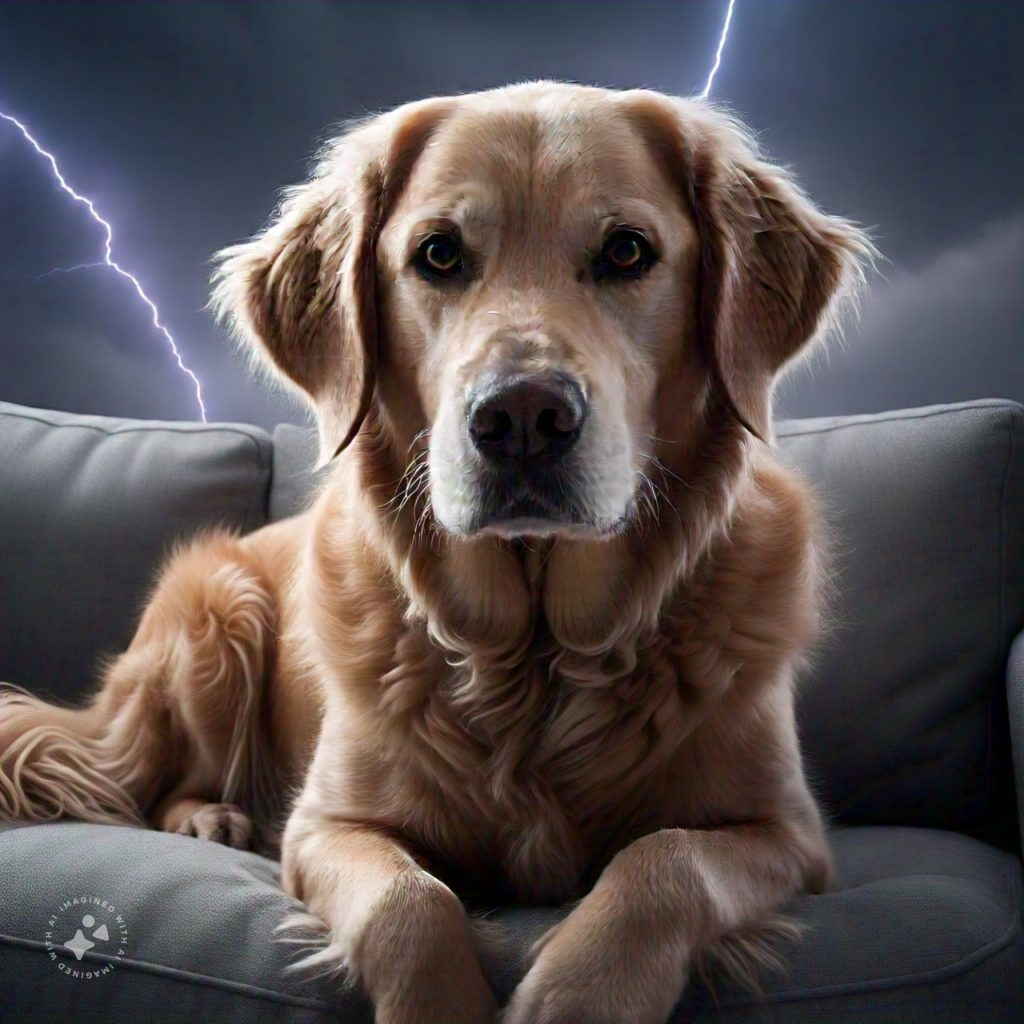Understanding Thunder Anxiety in Dogs
Thunder anxiety refers to an intense fear or phobia that dogs experience during thunderstorms. It’s more than just a momentary reaction; it can cause prolonged distress and even lead to destructive behavior. Recognizing the underlying causes and addressing the issue early is crucial for your dog’s emotional well-being.
Causes of Thunder Anxiety in Dogs
- Acute Hearing Sensitivity
Dogs have an exceptional sense of hearing. The loud cracks of thunder and low-frequency rumbles are significantly more intense for them than for humans. - Barometric Pressure and Static Electricity
Dogs are sensitive to atmospheric changes, including shifts in barometric pressure and static electricity. These cues signal an impending storm, potentially triggering anxiety before the first thunderclap. - Fear of the Unknown
For dogs who lack exposure to storms during their early development, the unfamiliar combination of sound, light, and pressure can induce fear. - Negative Associations
If a dog has experienced a traumatic event during a storm, they may associate all future storms with that event, heightening their anxiety. - Breed Predisposition
Certain breeds, such as herding dogs (e.g., Border Collies and Australian Shepherds), are more prone to noise sensitivities, including thunder anxiety.
Symptoms of Thunder Anxiety
Identifying the signs of thunder anxiety is the first step in addressing the issue. Symptoms may vary in severity but commonly include:
- Behavioral Symptoms:
- Trembling or shaking
- Whining, barking, or howling
- Pacing or restlessness
- Hiding under furniture or seeking close proximity to the owner
- Attempting to escape (e.g., scratching doors or digging)
- Physical Symptoms:
- Excessive drooling
- Panting
- Dilated pupils
- Destructive Behaviors:
- Chewing on furniture
- Scratching walls or floors
Effective Remedies for Thunder Anxiety in Dogs
While thunder anxiety can be challenging, several remedies can help alleviate your dog’s fear and promote calmness during storms.
1. Create a Safe and Secure Space
- Designate a quiet area where your dog feels safe, such as a bathroom or basement.
- Use blankets or cushions to make the space cozy and sound-dampening.
- Introduce a crate if your dog is crate-trained, as many dogs find comfort in enclosed spaces.
2. Soundproof the Environment
- Close windows and curtains to block out noise and visual stimuli like lightning flashes.
- Play calming music or white noise to mask the sound of thunder.
3. Introduce Calming Products
- Thundershirts or Compression Wraps: These snug garments apply gentle pressure, which can have a soothing effect on anxious dogs.
- Pheromone Diffusers or Sprays: Products like Adaptil mimic the calming pheromones produced by mother dogs.
- Calming Chews or Supplements: Look for natural remedies containing ingredients like chamomile, valerian root, or L-theanine.
4. Desensitization and Counter-Conditioning
This long-term approach helps your dog associate thunderstorms with positive experiences.
- Play recordings of thunderstorms at a low volume, rewarding your dog with treats or toys when they remain calm.
- Gradually increase the volume over time, maintaining a positive environment.
5. Engage Your Dog During Storms
- Distract your dog with interactive toys, like treat-dispensing puzzles.
- Play indoor games, such as tug-of-war or hide-and-seek, to divert their attention.
6. Behavioral Training
- Reinforce calm behavior by rewarding your dog when they stay composed during mild storms.
- Avoid excessive coddling, which can unintentionally reinforce their anxiety.
7. Medication for Severe Cases
For dogs with extreme thunder anxiety, consult your veterinarian about prescription options, such as anti-anxiety medication or sedatives.
Preventing Thunder Anxiety
If your dog is still young or hasn’t yet shown signs of thunder anxiety, you can take proactive steps to prevent it.
- Early Socialization
Expose your dog to various sounds and environments while they’re still a puppy. Gradual exposure to thunder sounds can help build resilience. - Routine and Stability
Maintain a consistent routine, including regular exercise and feeding schedules, to reduce your dog’s overall stress levels. - Positive Reinforcement
Reward calm behavior during storms or similar situations to create positive associations.
When to Seek Professional Help
If your dog’s thunder anxiety is severe or worsening, it’s time to seek professional assistance.
- Veterinarian: Rule out any underlying health issues and discuss potential medication options.
- Certified Animal Behaviorist: These experts can develop a customized behavior modification plan tailored to your dog’s needs.
Final Thoughts
Thunder anxiety in dogs is a common but manageable issue. By understanding its causes, recognizing the symptoms, and implementing effective remedies, you can help your dog navigate storms with less fear and more confidence. With patience and the right strategies, your dog can learn to stay calm, even during the noisiest thunderstorms.

